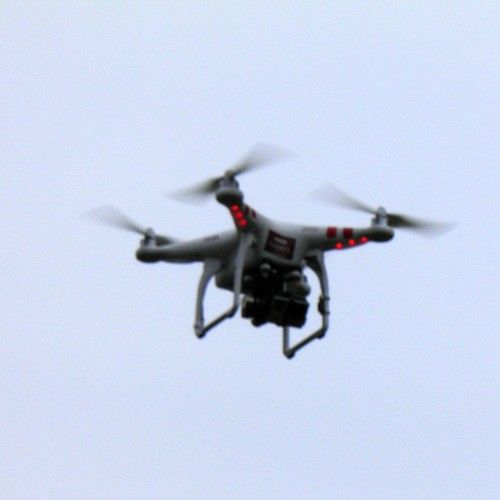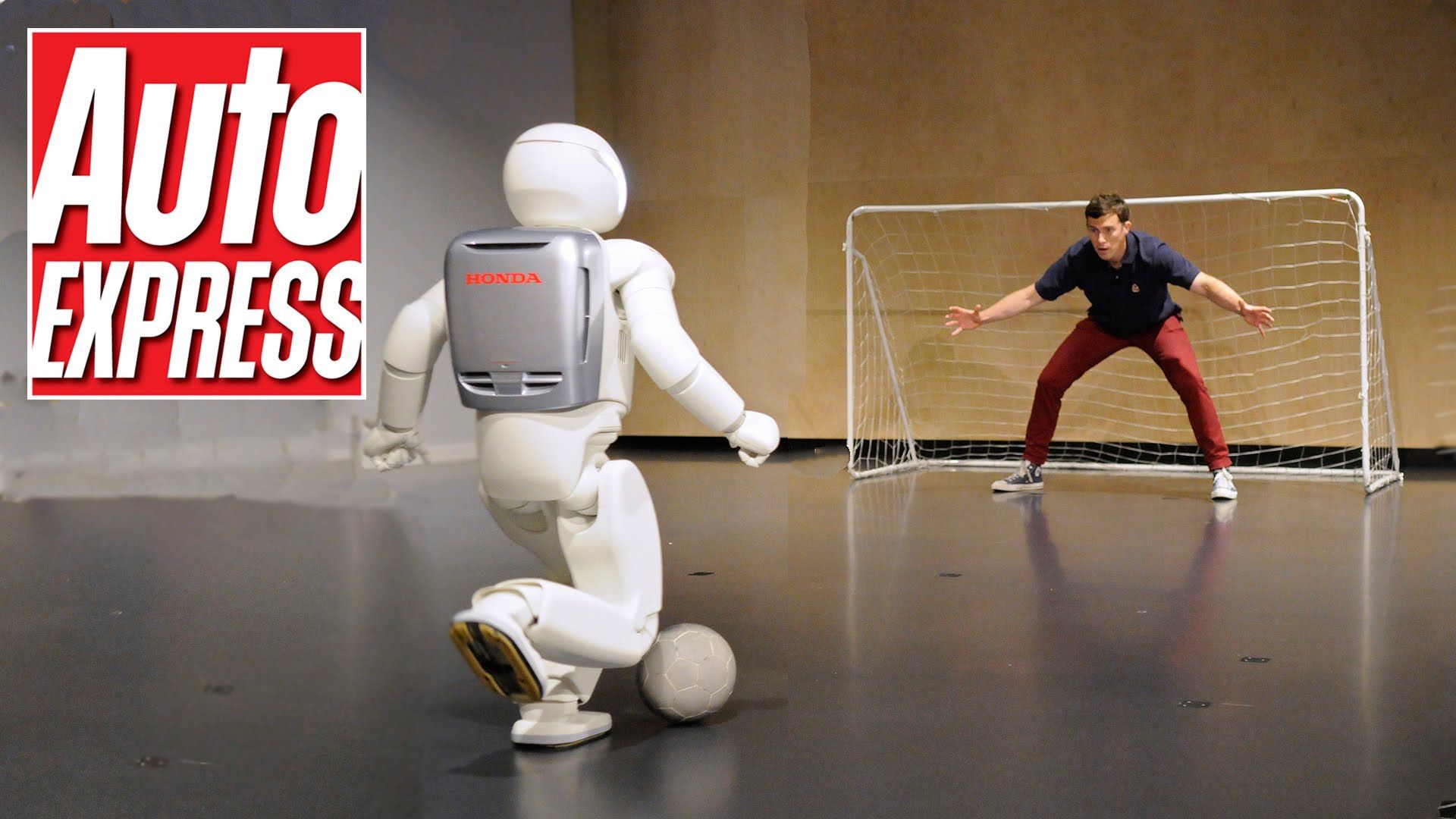New article on how tech can help achieve free education while also shrinking the prison system:
Micro drones, robot guards, and tracking chips will turn convicts into tax-paying, law-abiding citizens.

New article on how tech can help achieve free education while also shrinking the prison system:
Micro drones, robot guards, and tracking chips will turn convicts into tax-paying, law-abiding citizens.

Solar energy in the United States has seen immense momentum throughout the years. When the Solar Energy Industries Association released its annual report in 2008, it concluded that U.S. solar photovoltaic (PV) capacity reached a total of 1.183 gigawatts — a stellar achievement at the time.
Contrast that figure with today, and the number is dwarfed by the United States’ installed capacity of 21.3 gigawatts, enough energy to power 4.3 million homes.
As to what is powering this widespread adoption, one only needs to look at the residential market. According to recently released research by GTM, 72 percent of the market growth in 2014 is a result of solar tech companies offering diverse financing solutions and easy-to-navigate web platforms. Going solar for homeowners has become as easy as online shopping.

Auto Express’ Mat Watson meets Honda’s robot Asimo in Brussels, where he plays football, dances and serves a drink!
Dr. Nils J. Nilsson spent almost a lifetime in the field of Artificial Intelligence (AI) before writing and publishing his book, The Quest for Artificial Intelligence (2009). I recently had the opportunity to speak with the former Stanford computer science professor, now retired at the age of 82, and reflect on the earlier accomplishments that have led to some of the current trends in AI, as well as the serious economic and security considerations that need to be made about AI as society moves ahead in the coming decades.
One key contribution of early AI developments included rules-based expert systems, such as MYCIN, which was developed in the mid-1970s by Ted Shortliffe and colleagues at Stanford University. The information built into the diagnostic system was gleaned from medical diagnosticians, and the system would then ask questions based on that information. A person could then type in answers about a patient’s tests, symptoms, etc., and the program would then attempt to diagnose diseases and prescribe therapy.
“Bringing us more up to the future was the occurrence of huge databases (in the 1990s) — sometimes called big data — and the ability of computers to mine that data and find information and make inferences,” remarks Nils. This made possible the new work on face recognition, speech recognition, and language translation. “AI really had what might be called a take off at this time.” Both of these technologies also feed into the launch of IBM’s Watson Healthcare, which combines advanced rules-based systems with big data capabilities and promises to give healthcare providers access to powerful tools in a cloud-based data sharing hub.
Work in neural networks, another catalyst, went through two phases, an earlier phase in the 1950s and 1960s and a latter phase in the 1980s and 1990s. “The second phase (of neural networks) allowed…people to make changes in the connected strength in those networks and multiple layers, and this allowed neural networks that can steer and drive automobiles.” More primitive networks led to the cutting-edge work being done by today’s scientists in the self-driven automobile industry via companies like Tesla and Google.
Robotics was also being developed at Stanford in the 1950s and 1960s. A robot could look at its environment and determine the position of objects, could be given tasks and then make a plan of action to achieve the goal. A built-in monitoring system allowed it to evaluate results and it could re-orient itself and get back on track. These early robots used a digital equipment computer that is not nearly as powerful as the technology that we have on a present-day wristwatch, let alone an an autonomous drone.
All of these early technologies led to the trends in industry that are moving and shaking the global economy. An interesting difference worth noting, between the way that old and new technologies were primarily developed, has to do with the driving context. There is a well-known distinction between ‘demand-pull’ technology (using AI to solve existing problems) and ‘push’ technology orientations (AI that is developed from the top down, without necessarily meeting specific user needs).
In the earlier days of AI research, scientists and engineers leaned toward the latter ‘push’ method, as opposed to the ‘demand-pull’ strategy that is more prevalent today (though certainly both exist). Early AI scientists “really wanted to see how far they could leverage the technology”, remarks Nilsson, as they were fascinated by the basic techniques, but not yet sure about purpose.
Global security is an increasing threat made evident by developing technologies. People are and will be monitored more often (at airports, street corners, etc.). There’s also the issue of autonomous weapons, in particular planes or drones that are not guided as they are now. The technology is already available for allowing such machines to make decisions autonomously. This is already a pressing a public issue to which the United States, “as defenders of democracy”, and other nations should pay careful attention to, remarks Nilsson.
The theoretical concerns of AI’s threat to the existence of the human species, so readily covered in the media, are legitimate; however, Nils does not believe they are the only concern for the very near future. Instead, he suggests that AI poses other kinds of relevant threats about which we should also be thinking, such as those risks to the existing economic system.
The issue of employment as a result of increasing automation is one point for real consideration. Economists have made the argument that automation has occurred in the past and that such innovations have not prevented new startups; however, with the seeming inevitable development of human-level cognitive AI, there are many more jobs (certain types of journalism, for example) that machines can also perform more quickly.
“Now, should we regard that as a threat, or should we regard that as ‘well, lots of people have jobs that they don’t like, why should we regard eliminating the need for people to work at those jobs as a threat?”, says Nils. While increased automation will inevitably result in a decreased need for human labor, the question as to what humans will do with more leisure time remains. They could spend time doing more creative things, but this is a serious consideration for humankind.
Nilsson points out that nations will also need to reorient the economy. “The production of goods and services will certainly increase, but will be done by robots and automation; I think the big problem for us is to decide, ‘okay, how do we actually distribute these goods and services to people who aren’t earning a salary?’”
What are the potential solutions? On autonomous weapons, Nils believes that there certainly needs to be international collaboration. The United Nations (UN), “which sometimes is not as effective as it should be”, needs to be heavily involved. Nilsson states the need for forming other alliances with NATO, the Chinese, and other rising governments; he’s not sure what to do about the Middle East, which is already a “hot spot.”
Regardless, Nilsson emphasizes that the United States needs to be able to lead the way and set better, well thought-out examples in how we use such technology. “Not only we, as a ‘defender of democracy’ should pay careful attention to and worry about (these threats), but other nations need to do so also.”
On the issue of employment, Nils points to the need to ask some tough questions i.e. “are we going to have a policy of income distribution or reverse income taxes?” There is the problem of people’s ability to purchase, but also the very real consideration as to what people will do with their time, a paradox shift. “In the past, people didn’t have that worry because they had to work…we can’t very well go back to the old breads and circus thing of the Romans,” he jests.
Nilsson believes that this will require the usual avenues of politics and think tanks, though one would assume a much more active and integrated citizenry as well. “One important part is the citizenry has to be more well-informed about these threats than it is at the moment.” Coming up with real solutions requires a real collaborative, multi-pronged effort, one that is all too often easier said than done.
Our interstellar challenge is, how do we as a planet confined humans, become an interstellar species? This encompasses all human endeavors, and is vitally dependent upon interstellar propulsion physics to realize our coming of age as an interstellar species.
There are so many competing ideas on how to realize interstellar propulsion. These include chemical rockets, ion propulsion, nuclear engines, solar sails, atomic bomb pulse detonation, antimatter drives, small black holes, warp drives and much more.
How do we sift through all these competing ideas?
For his objectivity and courage in stating that mathematics has become so sophisticated that it can now be used to prove anything, I have named the approach to solving this interstellar challenge the Kline Directive, in honor of the late Prof. Morris Kline.
To achieve interstellar travel, the Kline Directive instructs us to be bold, to explore what others have not, to seek what others will not, and to change what others dare not. To extend the boundaries of our knowledge, to advocate new methods, techniques and research, to sponsor change not status quo, on 5 fronts, (1) Legal Standing, (2) Safety Awareness, (3) Economic Viability, (4) Theoretical-Empirical Relationship and (5) Technological Feasibility.
Legal Standing: Do we have the protection of the law?
Mr. Gregory W. Nemitz of The Eros Project is the first person I know, who pushed the limits of the law. As a US taxpayer, Nemitz claimed ownership of Asteroid 433, Eros, and invoiced NASA $20,000 for parking and storage of the NEAR Shoemaker spacecraft. Citing faulty interpretation of the Outer Space Treaty of 1967, NASA refused to pay. On April 26, 2004 U.S. District Court Judge Howard McKibben dismissed the case. We have to address this. What is to stop other governments from imposing taxes on our outer space commercial activities that is “for the benefit and in the interests of all countries”?
Safety Awareness: Can we protect our crew and our planet?
In the heady rush to propose ideas for new propulsions systems or star drives it is very easy to overlook safety considerations. Quoting E.J. Opik, “Is Interstellar Travel Possible?” Irish Astronomical Journal, Vol 6, page 299. “The exhaust power of the antimatter rocket would equal the solar energy power received by the earth — all in gamma rays”. And Opik quotes the eminent Carl Sagan, Planet. Space Sci., pp. 485–498, 1963, “So the problem is not to shield the payload, the problem is to shield the earth”.
Economic Viability: Can realistic commercial viability be determined?
Space exploration economic viability is not an accounting problem that can be solved by CFOs and accountants. This economic viability is a physics and engineering problem. For example, chemical rocket propulsion to Alpha Centauri, our nearest star, would cost about $1.19x10^14 or 23x 2011 world GDP.
Theoretical-Empirical Relationship: Is the hypothesis empirically sustainable?
String theories are a good example of a theoretical-empirical relationship that is yet to be proved. Let’s remember Prof. Morris Kline’s words when theorist claim a velocity of 1032 x c (velocity of light) is achievable. Don’t get me wrong. Mathematics is vital to the progress of the sciences, but it needs to be tempered with real world experimental evidence, otherwise it is just conjecture, and ties up our search for interstellar propulsion technologies.
The reverse is equally valid. Without the theoretical underpinnings, there will not be much experimental progress. Podkletnov’s gravity shielding experiments are a good example. In 2 decades since Podkletnov published his experiments, there has not been any experimental progress. My inference is that none of the proposed theoretical explanations addressed all the observations and therefore, could not guide future experiments.
Technological Feasibility: Does it work?
Technological feasibility in a realistic and finite time frame is vital. Technological feasibility quickly leads back to the question of commercial viability. Developing future feasible technologies is an iterative process between technological feasibility and commercial viability, until we can reach the stars without having to ask the question, whom do we select to leave Earth?
Applying the Kline Directive, a quick method of eliminating competing technologies is to construct the Interstellar Challenge Matrix that compares the pros and cons of each competing propulsion technology.
Can we hasten the development of interstellar propulsion technologies? Yes.
Since disproving the validity of Alcubierre-type warp drives, interstellar propulsion physics is currently non-existent. To birth this propulsion physics, in 2012, I classified physical hypotheses/theories into 3 categories (1) Type 1: The Millennium Theories, (2) Type 2: The 100-Year Theories and (3) Type 3: The Engineering Feasible Theories.
Type 1, Millennium Theories require more than a 100 years and maybe up to 1,000 years to prove or disprove. Mathematically correct but inscrutable with physically verifiable experiments, even in the distant future. String and quantum gravity theories fall into this category. Why? If we cannot even figure out how to engineer-modify 4-dimensional spacetime, how are we going to engineer-modify a 5-, 6-, 9-, 11- or 23-dimensional universe?
Type 2, 100-Year Theories show promise of being verified with technologies that would require several decades to engineer, test and validate, and do not lend themselves to an immediate engineering solution. The engineering solution is theoretically feasible but a working experiment or technology is some decades away as the experimental or physical implementation is not fully understood.
Type 3, Engineering Feasible Theories lend themselves to engineering solutions, today. They are falsifiable today, with our current engineering technologies, if one knows what to test for and how to test for these experimental observations.
We as a society need to apply the Kline Directive to invent new propulsion physics theories, that are at best Engineering Feasible and at worst 100-Year theories.
We now have the tools to quickly eliminate both theoretical and experimental proposals that are highly likely to be unproductive, and focus on those that truly have potential of delivering commercial interstellar propulsion technologies. In the US money is no object, as the combined 2015 DARPA and NSF budgets, is $10.26 billion. Allocating a very small slice of these budgets for propulsion physics would be an enormous step forward.
(This article was originally published in the Huffington Post.)

Castrol Edge & Video Games technologies: Racing a Real Car in Virtual Reality.
Castrol EDGE has premiered its latest Titanium Trial driving challenge, featuring Formula Drift professional Matt Powers driving his Roush Stage 3 Mustang whilst wearing a state-of-the-art Oculus Rift Development Kit 2 headset: blind to the real world around him, but fully-immersed in a rapidly changing 3D virtual world.
In a world first, Castrol EDGE fused video games technology and a real world driving experience, using a modified car and virtual reality technology, so a computergenerated world responded to the driver’s and car’s movements in real time.
The video game-like experience featured a mind-blowing landscape of falling boulders, crumbling track, tunnels, sheer cliff drops and even a cameo virtual appearance from another racing icon — with the landscape’s shifts reacting to Matt Powers’ every driving move.
The challenge was part of Castrol EDGE’s Titanium Trials, a series of high-powered challenges that bring man and machine together to push the boundaries of performance enabled by the strength of Castrol EDGE boosted with fluid Titanium technology – Castrol’s most technologically advanced and strongest oil.
After taking on the VIRTUAL DRIFT Trial, Matt Powers said: “Virtual Drift was exhilarating and challenging like nothing I’ve ever done before. It’s been awesome not only being involved and testing this next generation of gaming technology but the possibilities this opens up for motor sport in general are mind blowing. I had to rely on my instincts and the car to perform, with the strength of Castrol EDGE in the engine to give me the reassurance that the car would reach its maximum performance.”

Private aircraft tentatively seeking stockholders.

A viral video about a new app looks like a dream come true for anyone who struggles with math.
Based on the promo clip, PhotoMath, dubbed a “smart camera calculator,” appears to use smartphone cameras to scan a photo of a math equation in a textbook and display the answer instantly — similar to apps that scan barcodes and takes users to a link in a web browser. It looks like the app can also show step-by-step instructions for solving the problem.
PhotoMath’s parent company MicroBLINK launched the app this week at TechCrunch Disrupt Europe in London, TechCrunch reports. It is available in the App Store on iTunes.

Legendary Internet entrepreneur Joe Firmage is back, and he plans to turn the Internet upside down. Again.
He did it once before with USWeb in the 90s, designing and building Internet sites, intranets, and applications for more than half the Fortune 100 and thousands of startups.
Now his new venture — 15 years and tens of millions in the making — called ManyOne, plans to do the same for a public (and for businesses of any size) dazed by the complexities of setting up websites. And worse, mystified about getting page rank on search engines — and even worse, creating their own successful apps.
ManyOne — which is now operational — lets anyone buy domains and set up a website via a series of forms, in literally minutes. That includes a selection of themes (designs) and e-commerce features for businesses, Firmage told me in an exclusive phone interview yesterday.